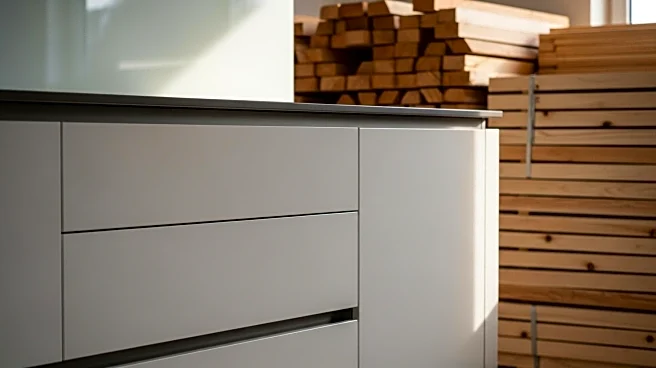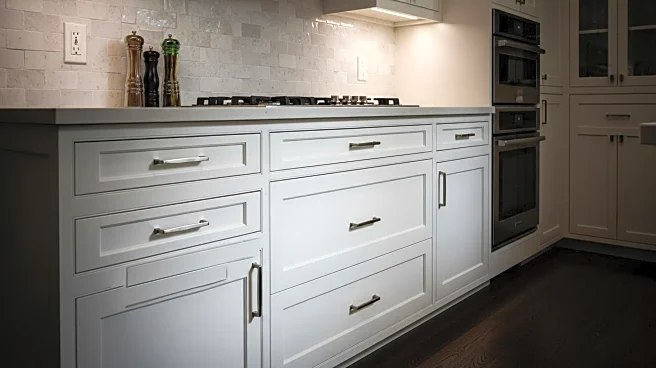What's Happening?
President Trump has introduced new tariffs on imported furniture, kitchen cabinets, and lumber, with duties ranging from 10% to 50%. This move is part of his strategy to boost domestic manufacturing. However,
economists warn that these tariffs will increase costs for housing, furniture, and renovations, potentially slowing down construction work. The tariffs are seen as a measure to protect U.S. industries but may have unintended consequences on consumer prices and market dynamics.
Why It's Important?
The introduction of tariffs by President Trump is significant as it reflects ongoing efforts to prioritize domestic manufacturing. While intended to support U.S. industries, the tariffs could lead to higher consumer prices, affecting affordability and demand in the housing and furniture markets. This policy may benefit domestic manufacturers but could also strain consumers and businesses reliant on imported goods, leading to broader economic implications.
What's Next?
As the tariffs take effect, stakeholders in the construction and furniture industries will need to adapt to changing cost structures. There may be increased lobbying efforts from affected industries seeking relief or adjustments to the tariff policy. Additionally, consumer advocacy groups might push for measures to mitigate the impact on prices, potentially influencing future policy decisions.
Beyond the Headlines
The tariffs highlight the complex interplay between protectionist policies and global trade dynamics. They raise questions about the long-term sustainability of such measures and their impact on international relations. The move could also influence cultural attitudes towards domestic production and consumption, shaping future economic policies.











